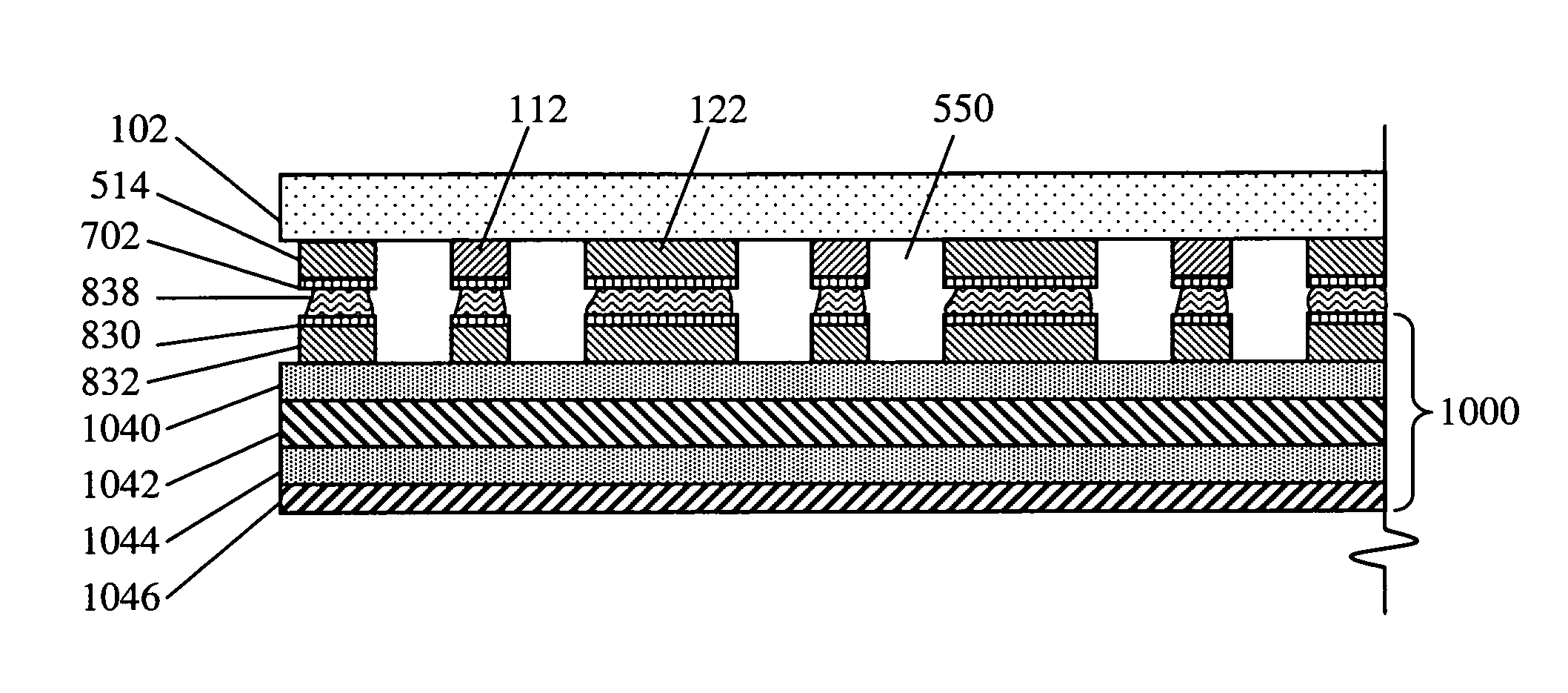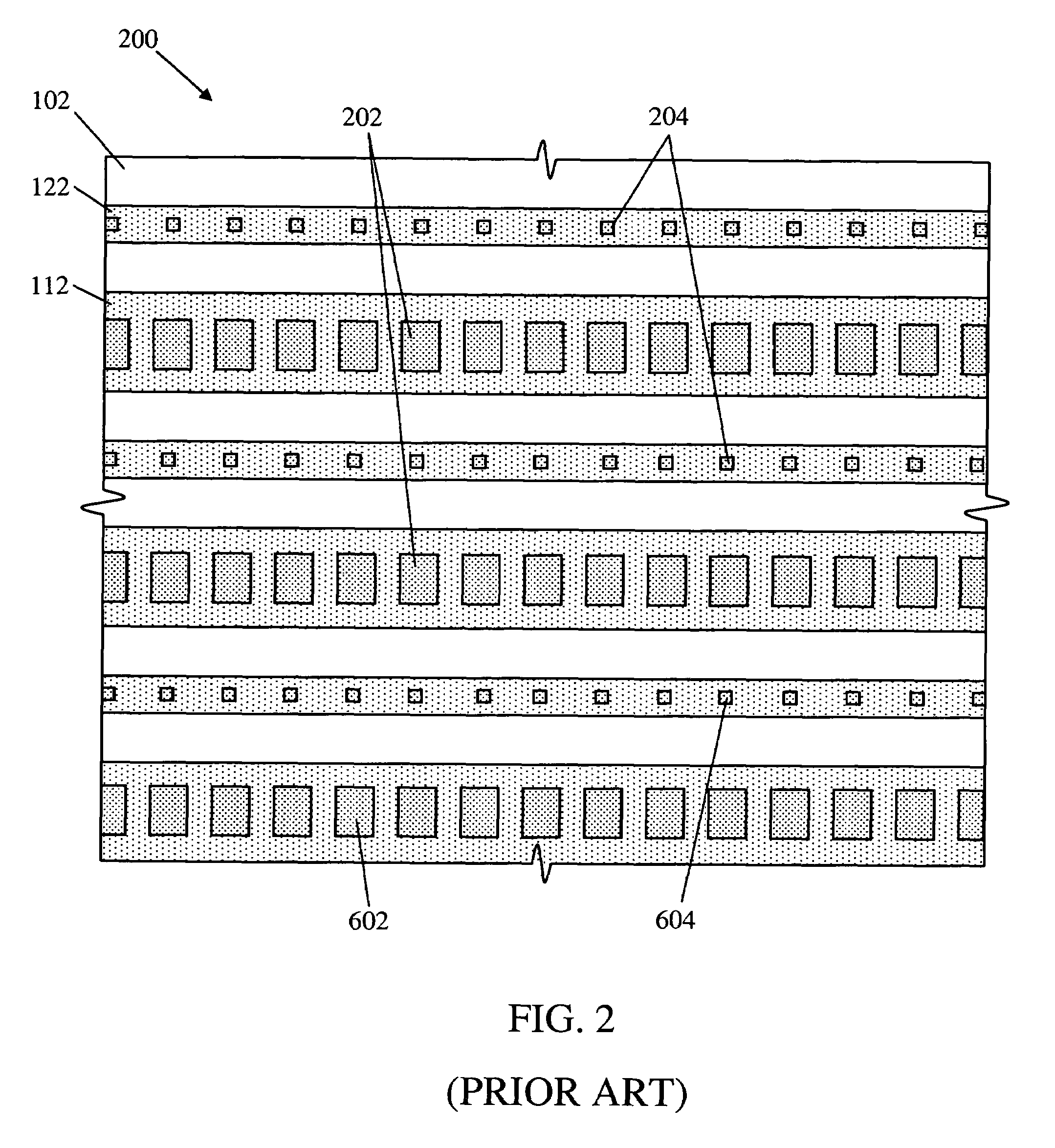Apparatus and method for bonding silicon wafer to conductive substrate
a technology of silicon wafers and substrates, applied in the direction of basic electric elements, sustainable manufacturing/processing, final product manufacturing, etc., can solve the problems of reducing the overall collection efficiency of dies, reducing the efficiency of conductive substrates, and limited dies b>200/b> that may be bonded to substrates
- Summary
- Abstract
- Description
- Claims
- Application Information
AI Technical Summary
Benefits of technology
Problems solved by technology
Method used
Image
Examples
third embodiment
[0046]Illustrated in FIG. 10 is a sectional view of the photovoltaic die bonded to a complementary second substrate in accordance with a third preferred embodiment of the present invention. The invention in the third embodiment includes a third substrate 1000 that provides structural support for the die 600 while dissipating thermal energy received there from. Like the second substrate 800 described above, the third substrate 1000 also provides enhanced electrical conductivity to the embedded cross bars 112, 514, 122 of the die 600 and electrical coupling between the first set of traces 112, 514 and between the second set of traces 122. The conductive traces of the die 600 together with cross bars embedded in the substrate and solder there between cooperate to form a laminated power circuit (for internally collecting current within the die or solar panel) that substantially reduces resistive losses compared to prior art photovoltaic cells.
[0047]The first set of conductive structures...
fourth embodiment
[0055]Illustrated in FIG. 11 is a side view of a heat sink adapted to receive a die and substrate, in accordance with a The combination of die 600 and first substrate 800 or second substrate 1000, for example, may be bonded to the heat sink 1102 using elastomeric, thermally conductive material such as a phase changer thermal compound. Some phase changer thermal compounds well known to those skilled in the art are pressure sensitive and have optimum thermal conductive properties when subjected to elevated pressure. This increased pressure may be achieved by securing a die 600 and substrate 1000 having a predetermined curvature within a heatsink in a manner that allows in the curvature to bias at least a portion of the substrate onto the heatsink.
[0056]In the third preferred embodiment discussed above, the composition and thickness of the plurality of plies of the substrate 1000 are selected to induce a curvature in the first ply 832 that is substantially equal to the curvature of th...
PUM
| Property | Measurement | Unit |
|---|---|---|
| Temperature | aaaaa | aaaaa |
| Thickness | aaaaa | aaaaa |
| Electrical conductivity | aaaaa | aaaaa |
Abstract
Description
Claims
Application Information
 Login to View More
Login to View More - R&D
- Intellectual Property
- Life Sciences
- Materials
- Tech Scout
- Unparalleled Data Quality
- Higher Quality Content
- 60% Fewer Hallucinations
Browse by: Latest US Patents, China's latest patents, Technical Efficacy Thesaurus, Application Domain, Technology Topic, Popular Technical Reports.
© 2025 PatSnap. All rights reserved.Legal|Privacy policy|Modern Slavery Act Transparency Statement|Sitemap|About US| Contact US: help@patsnap.com



